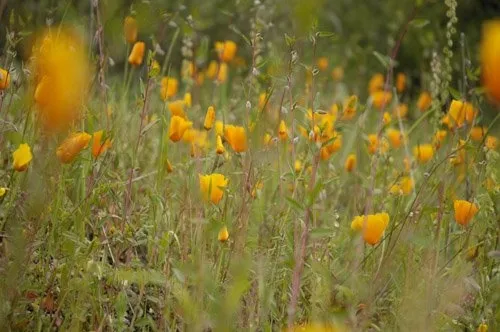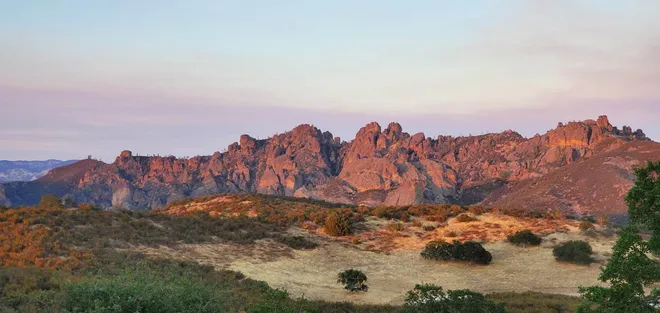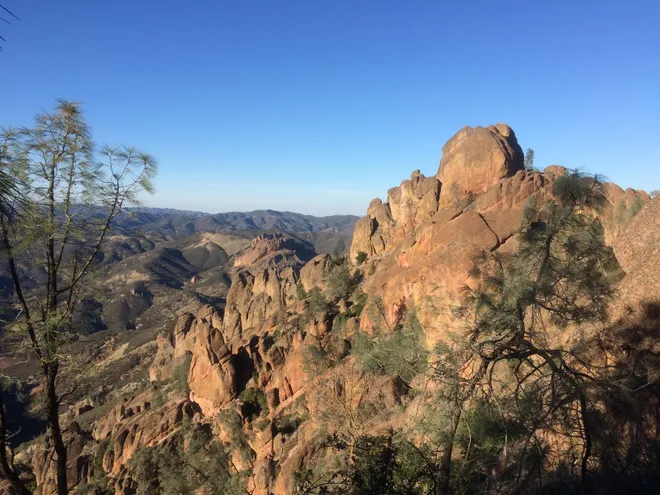Spring visitors are treated to vibrant blossoms in nearly every color of the rainbow.
“Pinnacles has a stunning wildflower bloom that occurs between February and June, courtesy of the greatest bee species diversity density on the planet,” explained Christopher Symons, West lead ranger and volunteer coordinator at the park. “Over 500 species of bees reside in the small boundary of Pinnacles National Park.”
“In April, most of the March-blooming species are still blossoming, and such species as Johnny-jump-ups, virgin’s bower, gilia, suncups, chia, black sage, pitcher sage, larkspur, and bush lupine have joined the spectacular display,” according to the park’s website.

Pinnacles is known for its namesake rock spires, wildflowers and wildlife, particularly California condors.
According to the National Park Service, as few as 22 California condors were left by the early 1980s, but collaborative conservation efforts have boosted the still critically endangered species’ numbers. Pinnacles National Park is one place where captive-bred California condors are released to the wild.

The park’s stargazing opportunities are less famous but nonetheless notable. They are spotlighted in Star Parties over the summer.
The closest major airport is San José Mineta International Airport. San Jose, Santa Cruz and Monterey are all less than an hour and a half away by car from Pinnacles.

How much does it cost to go to the Pinnacles?
There is a $30 entry fee for private vehicles at the park.
Most visitors spend a day in the park, but avid hikers and rock climbers may stay longer.
There are more than 30 miles of trail at Pinnacles.
With limited parking available, visitors can sometimes wait an hour for a parking spot or be turned away on busy weekends.